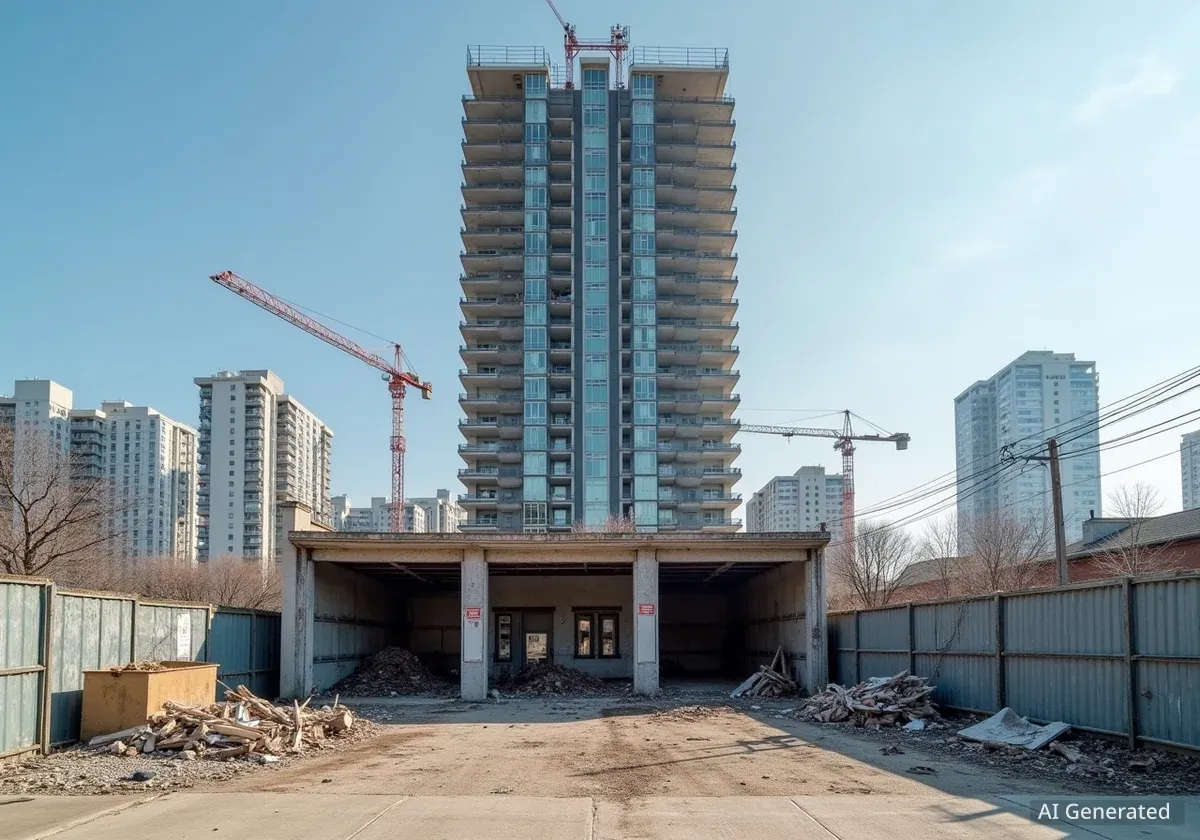The United States housing market is undergoing a significant transformation in late 2025, with increasing inventory and falling prices in over 100 metropolitan areas creating new opportunities for homebuyers. After a prolonged period of seller dominance, key indicators suggest the market is moving toward a more balanced, and in some regions, buyer-friendly environment.
Despite recent interest rate cuts by the Federal Reserve, the market has remained sluggish. However, real estate experts at Berkshire Hathaway HomeServices identify the current conditions as a potential "turning point," particularly in former pandemic hotspots that are now seeing substantial price corrections.
Key Takeaways
- The U.S. housing market is pivoting, with conditions becoming more favorable for buyers in fall 2025.
- Home prices have declined in 110 of the nation's 300 largest metro areas, a significant increase from 31 at the start of the year.
- Formerly booming markets, including Austin, Texas, and several cities in Florida, are experiencing the most significant price drops.
- Increased housing supply, now up for 22 consecutive months, is giving buyers more selection and bargaining power.
A National Market Rebalancing
The U.S. housing market has been slow to respond to economic adjustments. Even after the Federal Reserve initiated two quarter-point interest rate cuts in September and October 2025, bringing the federal funds rate to a range of 3.75% to 4.00%, the real estate sector remained subdued. Mortgage rates, which were expected to fall, briefly climbed back toward 7% before settling. As of early November, the average mortgage rate stood at 6.32%.
However, underlying trends point to a fundamental change. According to an analysis by Berkshire Hathaway HomeServices, several factors are aligning in favor of those looking to purchase a home.
"Fall 2025 could be the turning point for homebuyers. Following the slowest spring-summer housing market in decades, market conditions are moving toward a more equitable balance between selling and buying a home."
The firm highlights that housing supplies have increased for 22 consecutive months, home prices are stagnating nationally, and the frequency of price cuts is accelerating. These developments signal a departure from the intensely competitive market of recent years.
The Power Dynamic Shifts to Buyers
A key metric in real estate is the months' supply of inventory, which indicates how long it would take to sell all available homes at the current sales pace. This figure often determines who holds the power in negotiations.
Berkshire Hathaway HomeServices explains the dynamic clearly: a market with less than a four-month supply of homes for sale puts sellers in control. In these conditions, sellers can test higher prices, decline contingencies, and favor all-cash offers.
From Seller's to Buyer's Market
A market is generally considered balanced with a 4 to 6-month supply of homes. When the supply exceeds six months, the advantage shifts decisively to homebuyers. With more inventory to choose from, buyers gain significant bargaining power, often compelling sellers to lower list prices and agree to concessions like covering closing costs or repairs.
With inventory steadily rising across the country, more regions are approaching or have already entered this buyer-friendly territory. This gives purchasers more leverage than they have had in years.
The Sunbelt's Cooldown
The pandemic triggered a massive relocation trend, with many Americans moving from expensive coastal cities like New York and San Francisco to more affordable Sunbelt states. Destinations in Florida, Texas, and the Southeast saw a huge influx of new residents, drawn by lower taxes, larger homes, and pro-business policies.
Case Study: Austin, Texas
Austin, Texas, became a prime example of this boom. The city's vibrant culture and growing tech scene attracted waves of new residents, causing home prices to surge by an astonishing 30% year-over-year in 2021. However, the market has since reversed course.
A combination of slower job growth and a surge in new construction has created an oversupply of housing. New builds now make up 24% of Austin's housing inventory, far above the national average of 17.3%. As a result, Austin has transformed into a buyer's market. Since its peak in August 2022, the city's median home price has fallen by 15%.
Florida Sees Widespread Price Drops
The cooling trend is not limited to Texas. Florida, another pandemic-era hotspot, now dominates the list of cities with the steepest price declines. Of the 10 metro areas with the largest year-over-year price drops, seven are in the Sunshine State.
- Punta Gorda: Prices fell by 12%
- Cape Coral: Prices decreased by 10%
This reversal highlights a broader cooling trend in markets that experienced the most dramatic growth during the pandemic housing surge.
Navigating Homebuyer Hesitation
Despite the improving conditions, many potential buyers remain on the sidelines. The rapid shift in the market has created a new set of concerns.
The Fear of Falling Value
One of the primary fears is purchasing a home only to see its value decrease further. In an environment where prices are actively falling in many areas, buyers are cautious about timing their purchase. This hesitation is compounded by mortgage rates that, while lower than their peak, are still double what they were just a few years ago. The combination creates a fear of overpaying for both the property and the financing.
As the market continues to adjust, buyers are carefully weighing the benefits of increased inventory and negotiating power against the risks of potential price declines and elevated borrowing costs. The coming months will be critical in determining whether this turning point translates into a true revival of homebuying activity.





